Alright, maybe not every mountain. But we did climb the one across the street from our apartment. Let’s tell the tale through pictures and save those thousand words for another day.
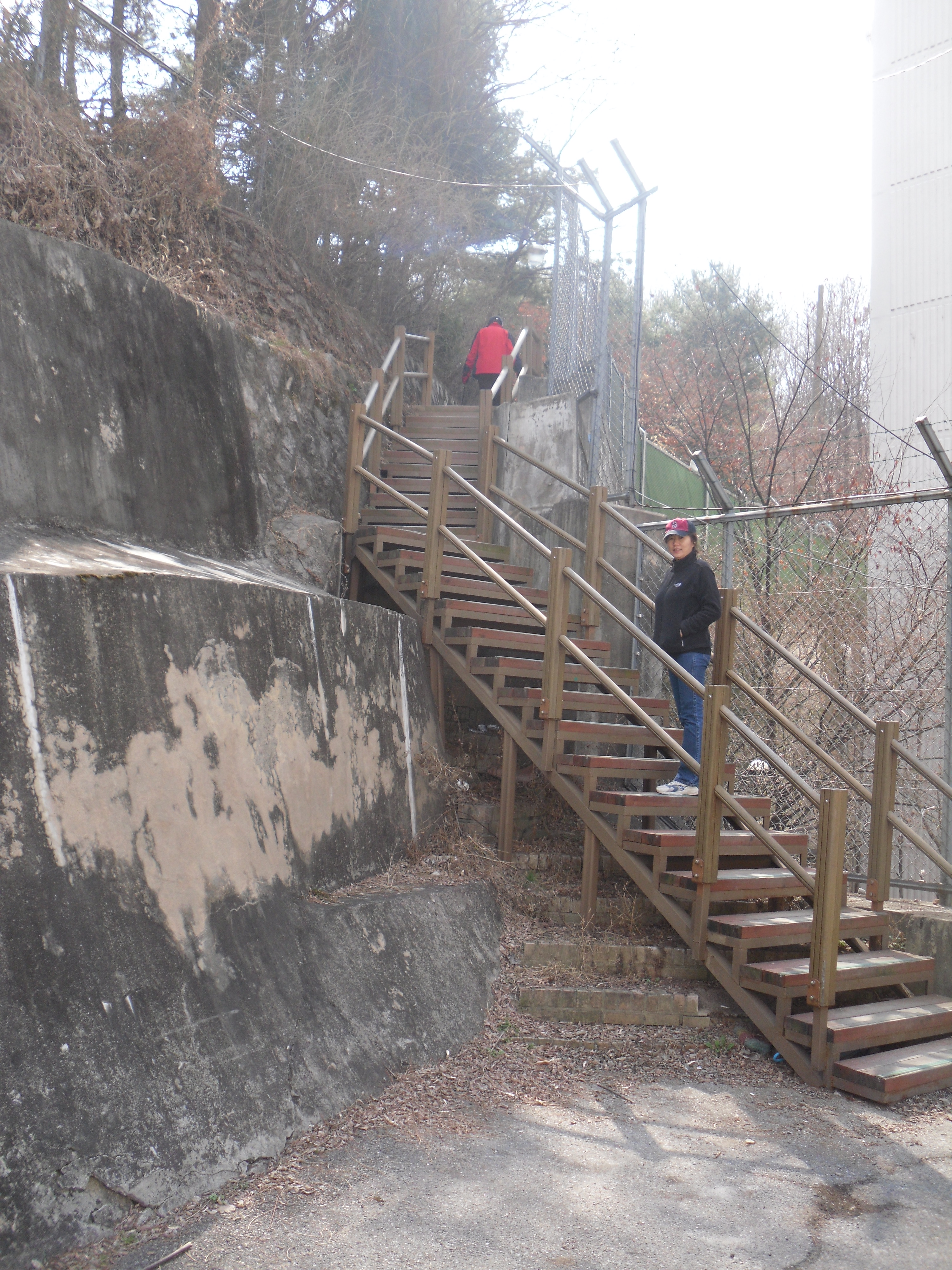
the street ended, but not our climb as these wooden stairs (and Jee Yeun) beckoned me onward and upward…
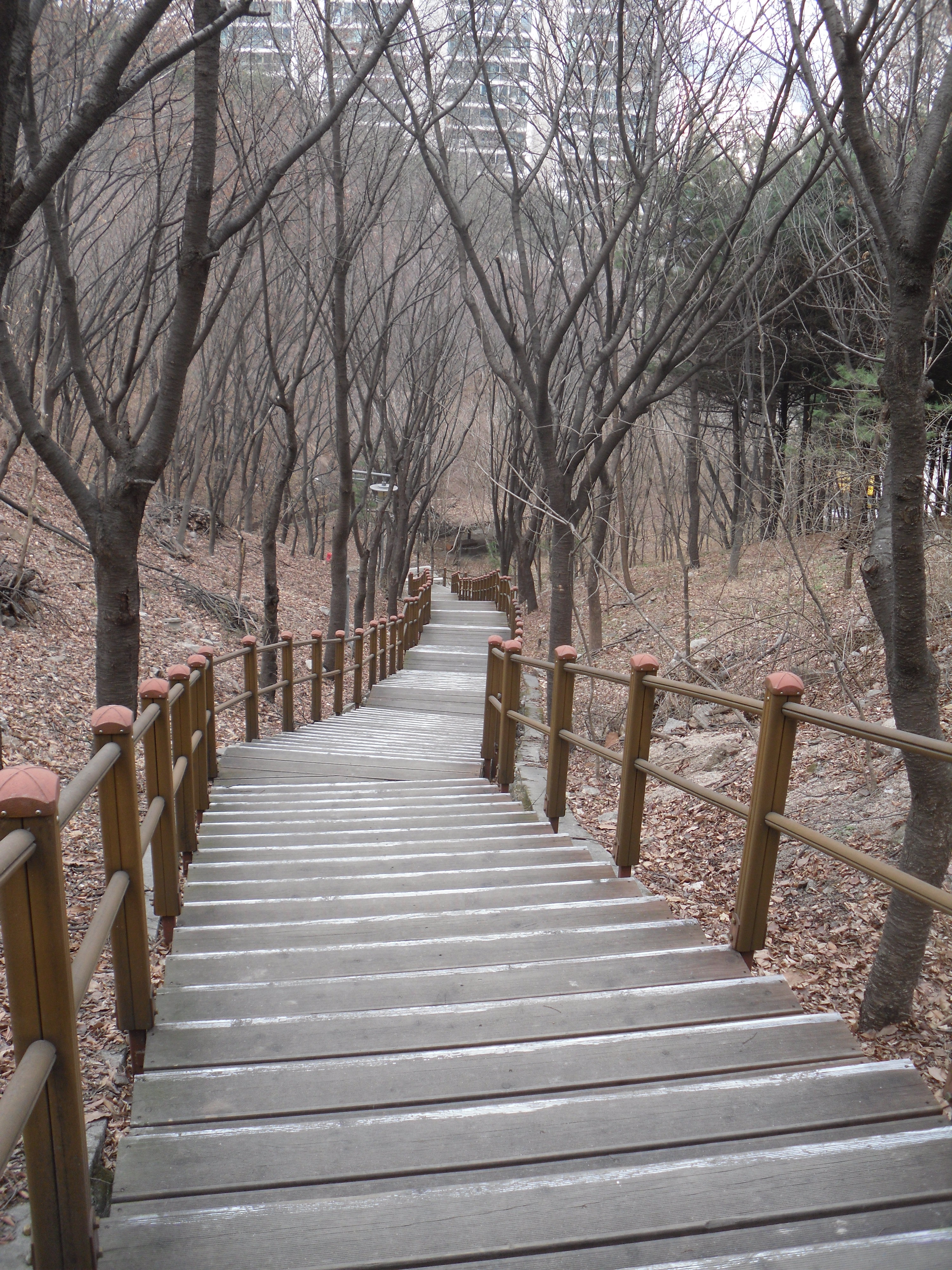
…looking back from whence I came.
The steps were many and my heart was pounding in anticipation. Or something.
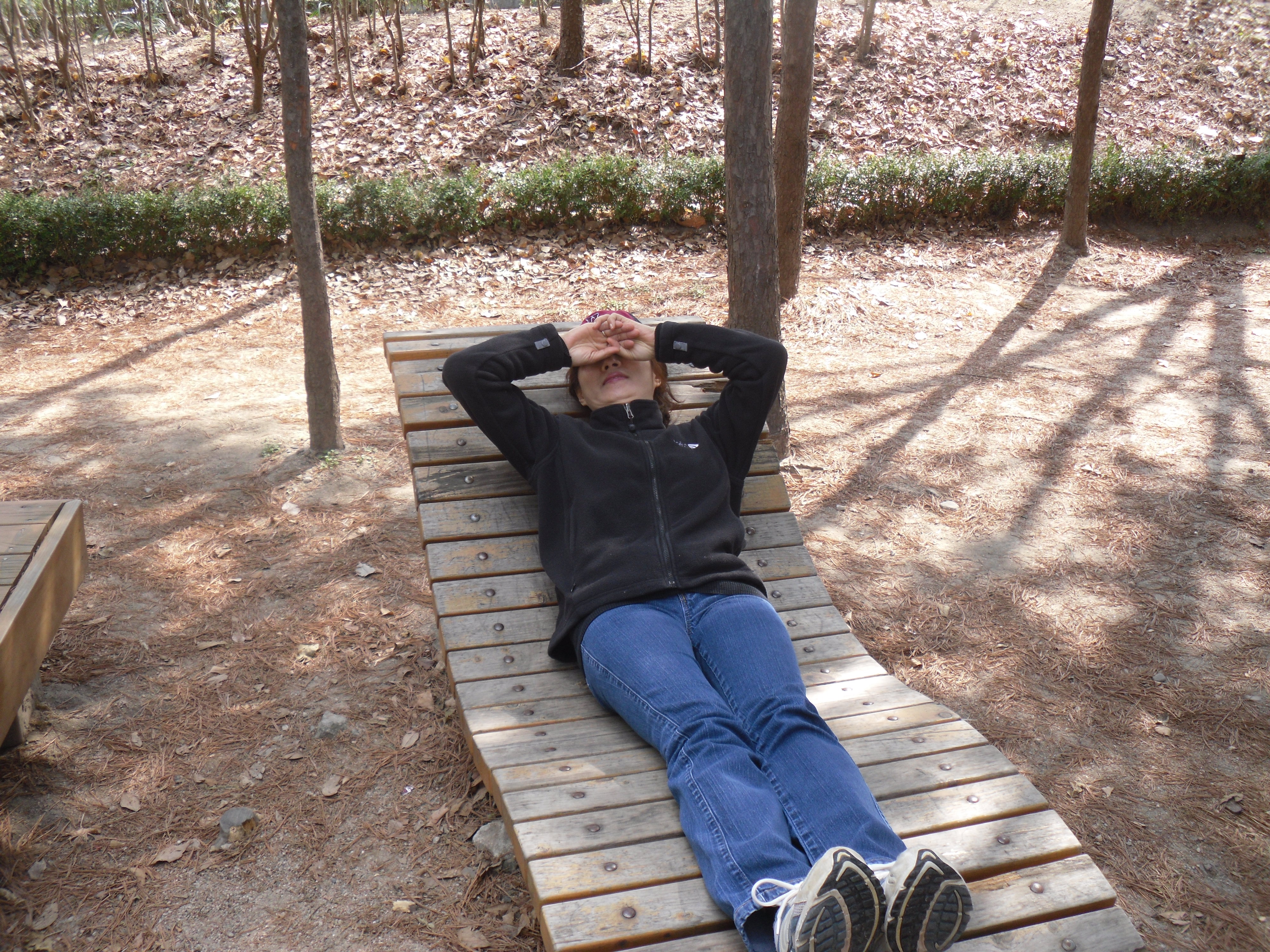
I must say that I’m always impressed with how much thought and effort the Koreans put into these urban oasis’. Jee Yeun reclines on a comfortable bench. All she needs now is something good to read…
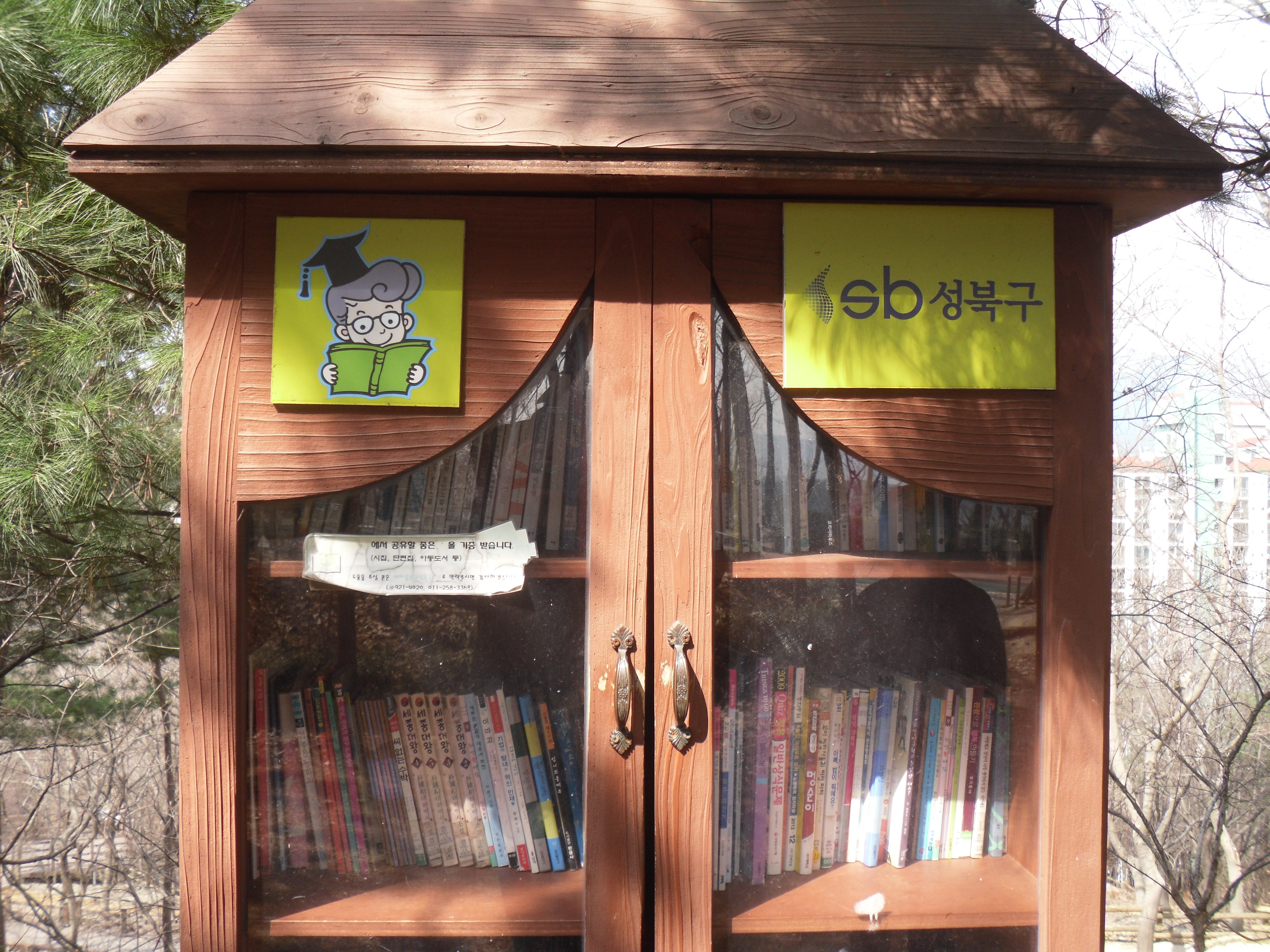
…and I’ll be damned if they didn’t think of that too! Seriously, this is something I’ve never seen before. I don’t expect those books would last a day in the states though…
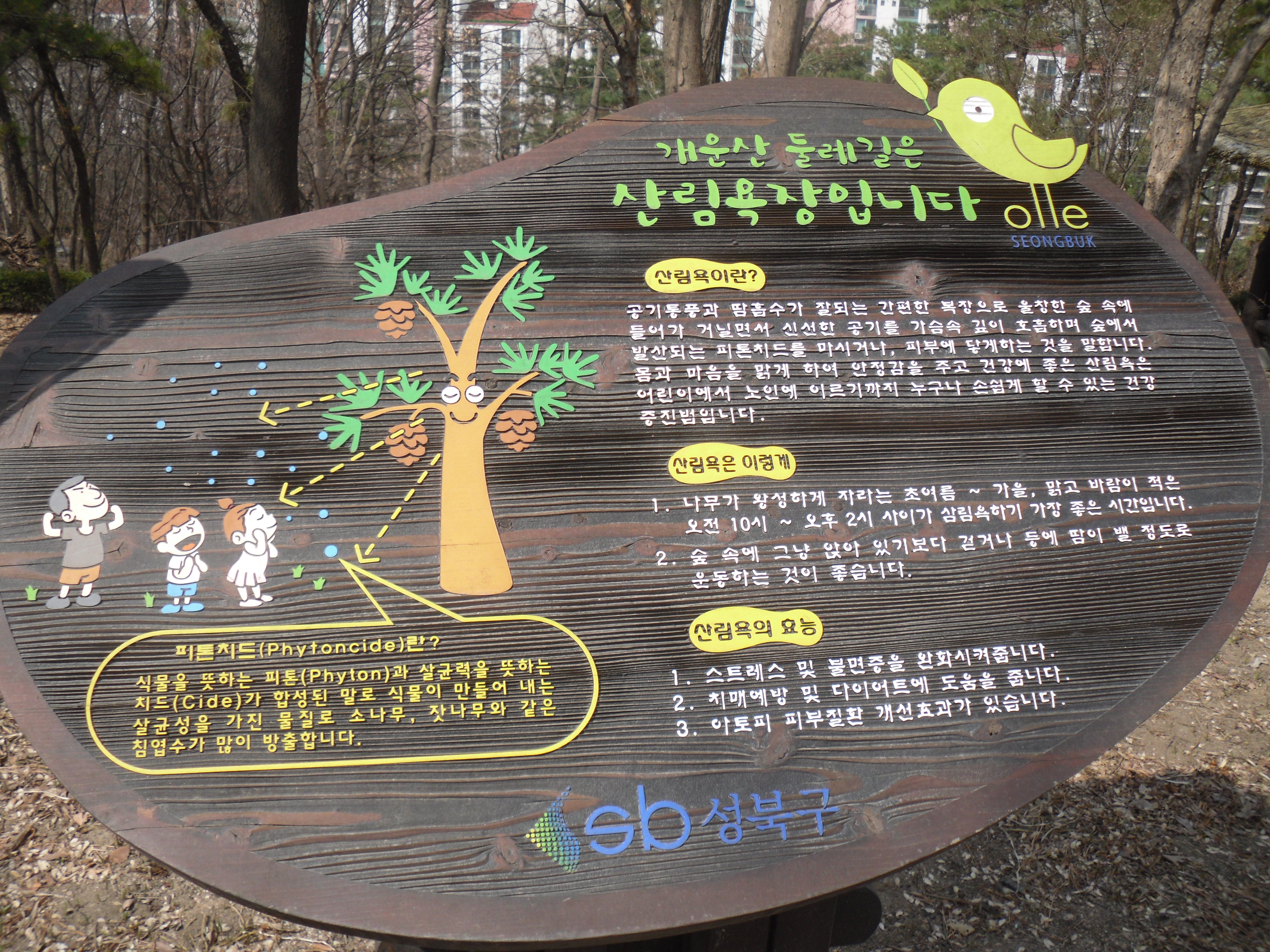
I’m fairly certain that this sign says something along the lines of “beware of evil pine trees and their scented cones that will mesmerize your children in Pied Piper fashion”. Or maybe it doesn’t.
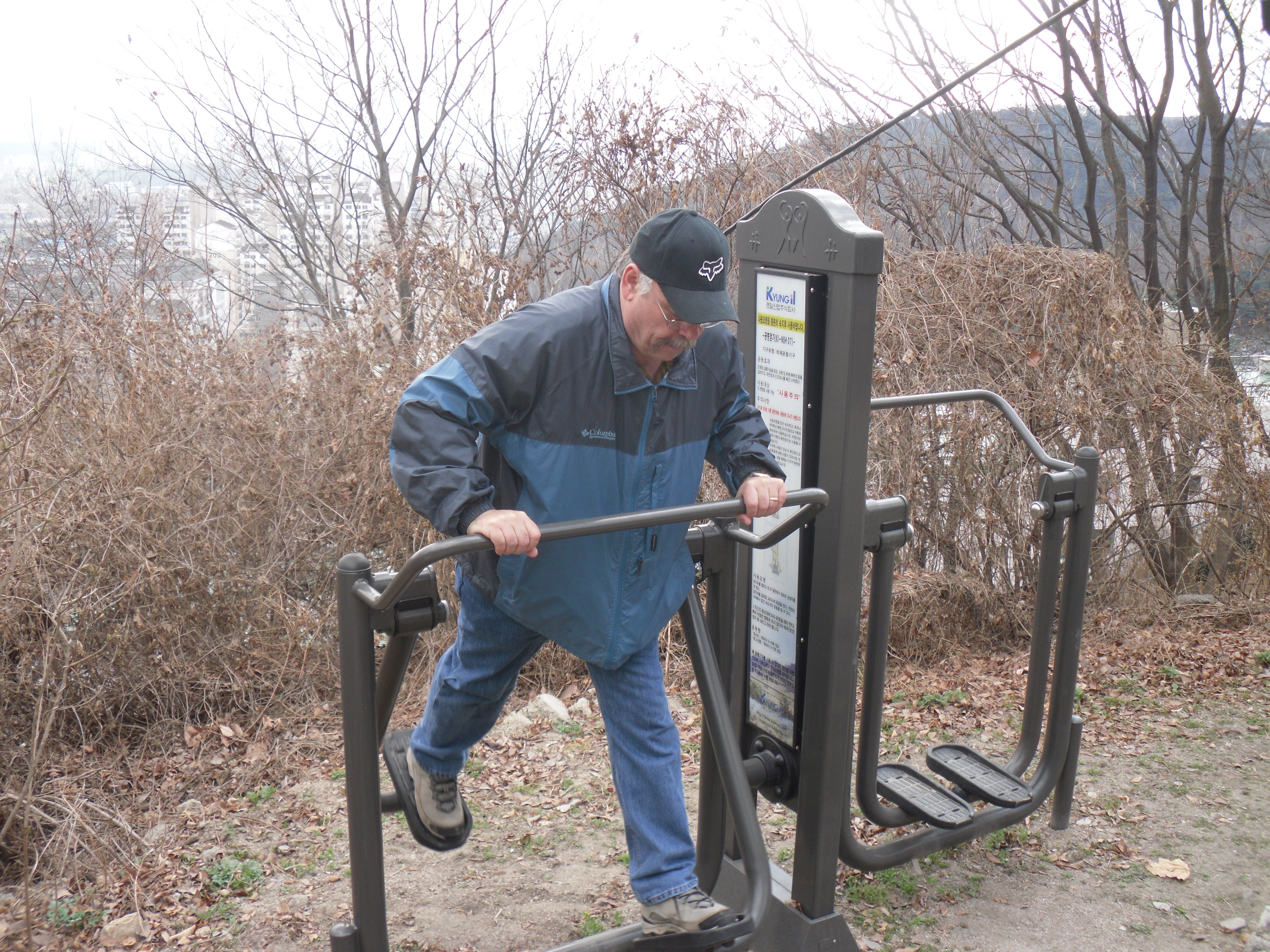
At yet another exercise way station I can’t resist climbing aboard this contraption. It was actually kind of fun…

Heading back to our high rise apartment I told Jee Yeun I’d like to live in a house like this. She just gave me that look I’ve come to understand as meaning “you don’t have a clue, do you?”
It was a good day and a nice hike.

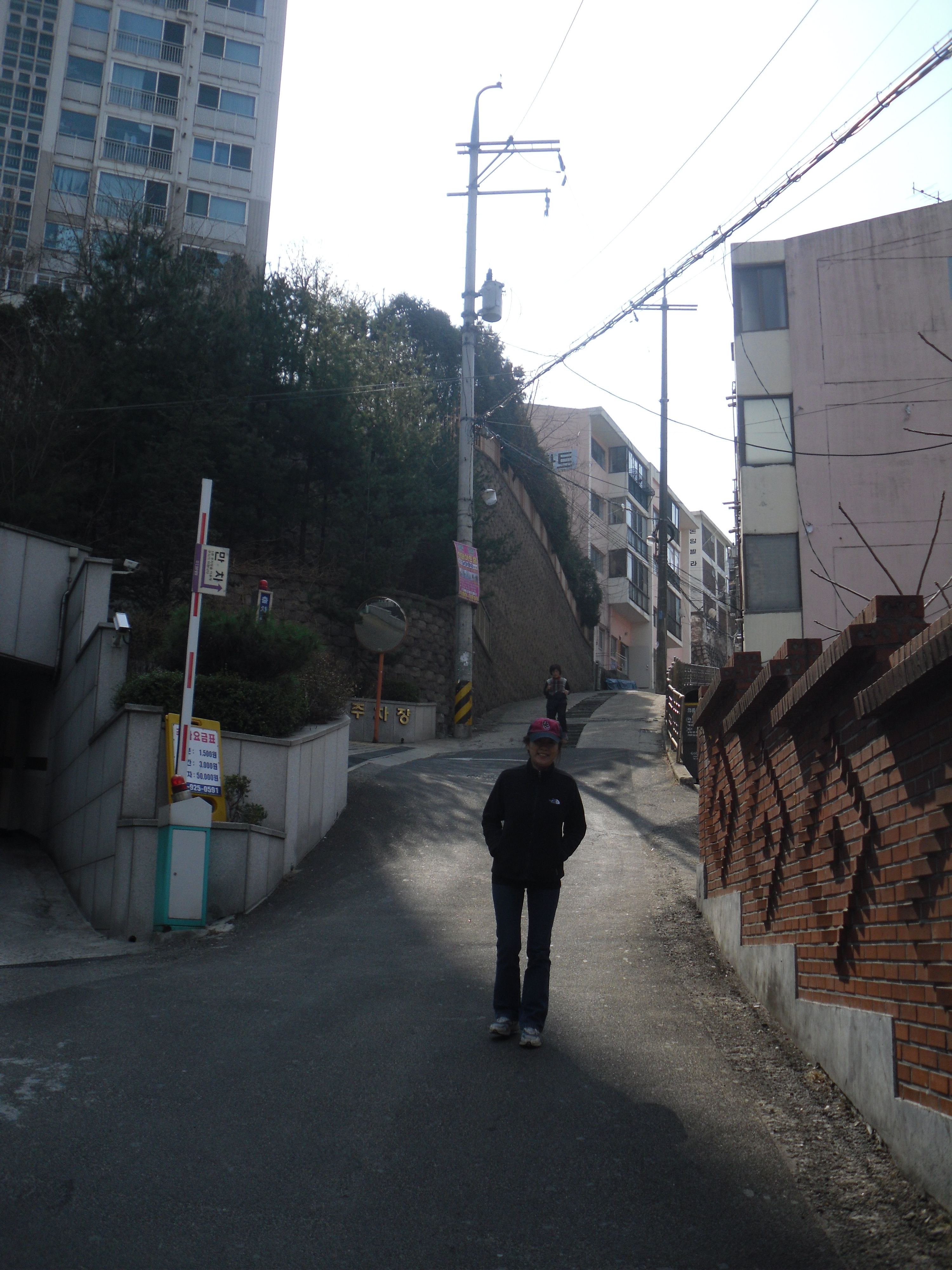
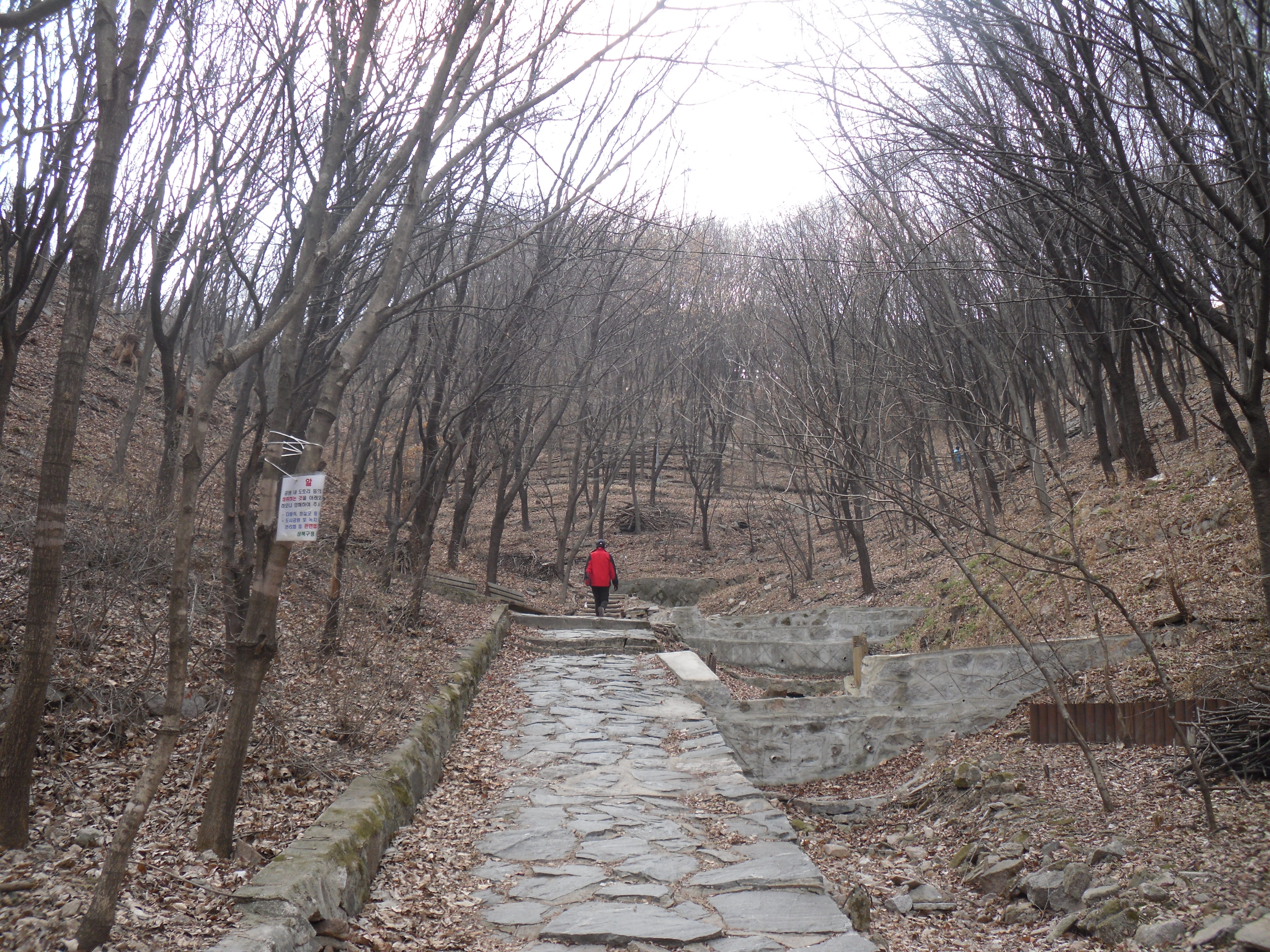
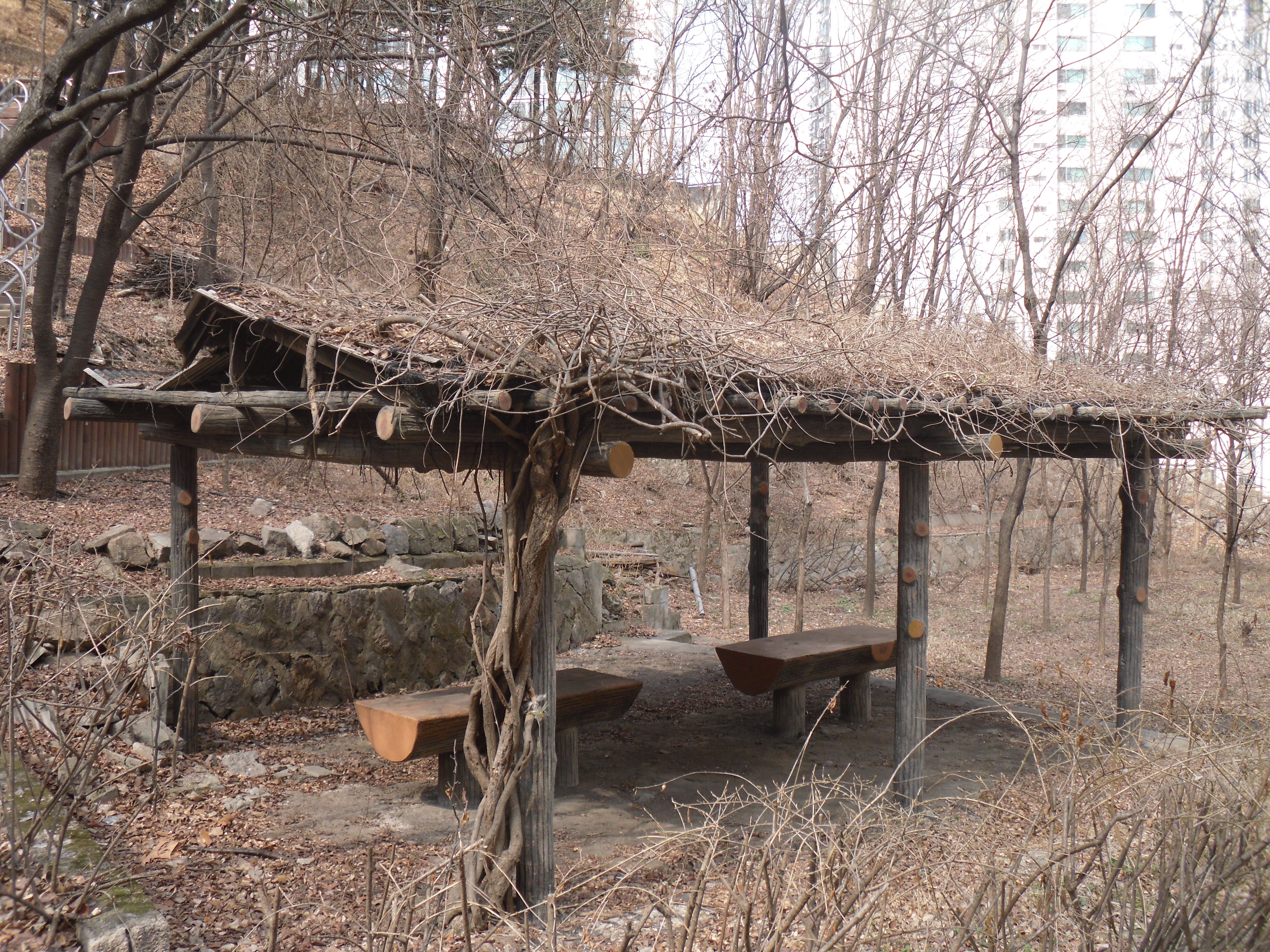

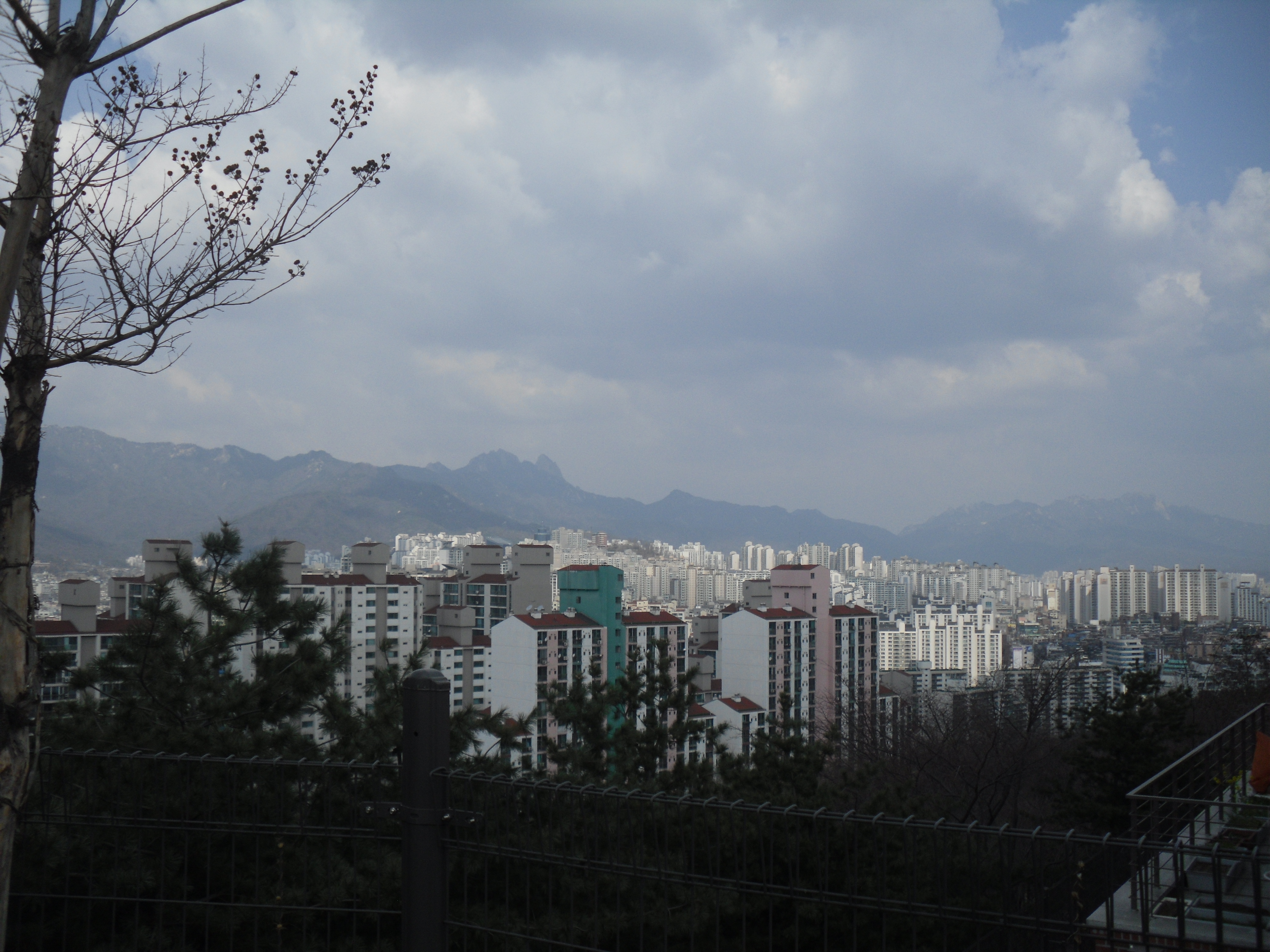
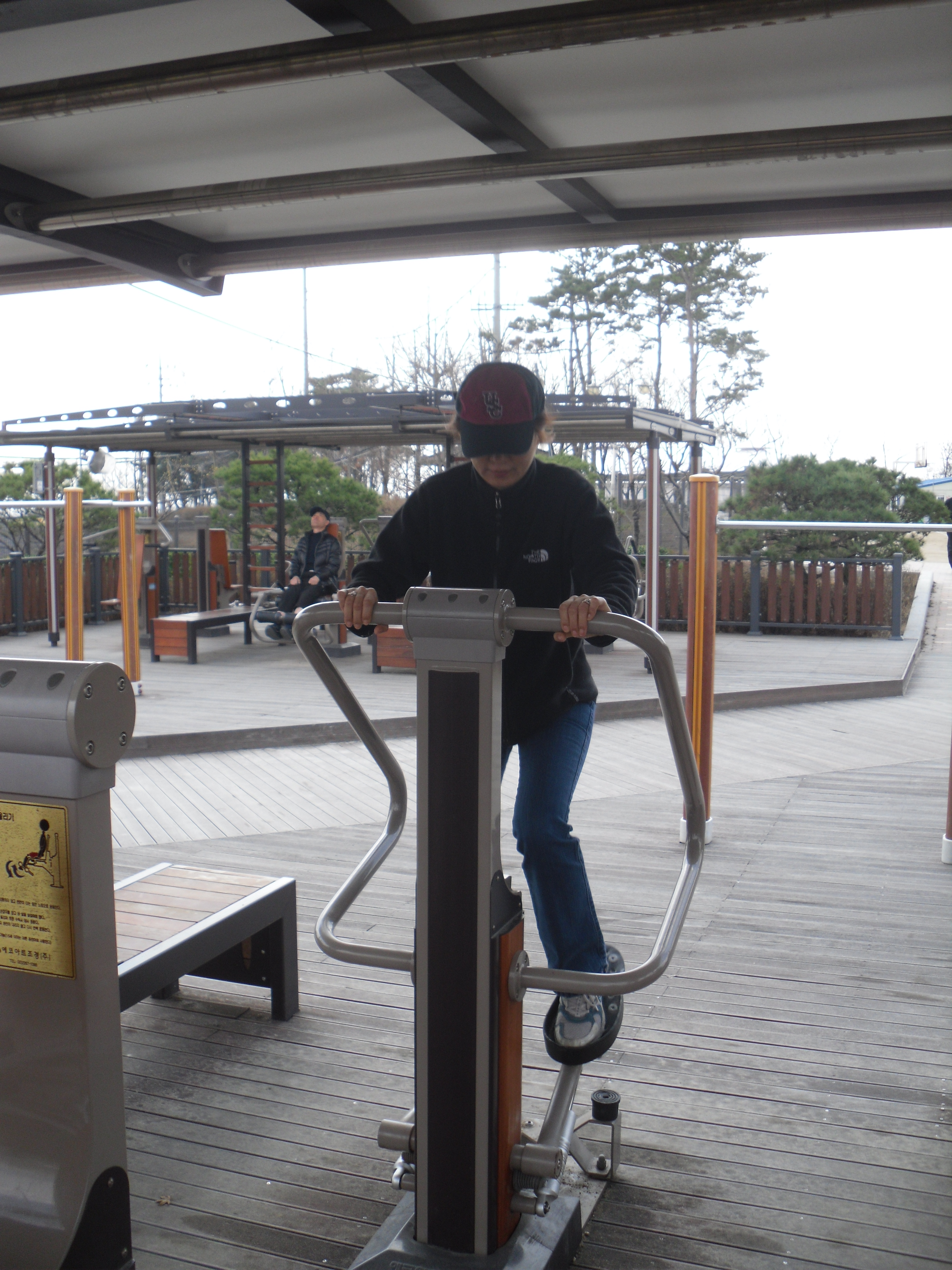
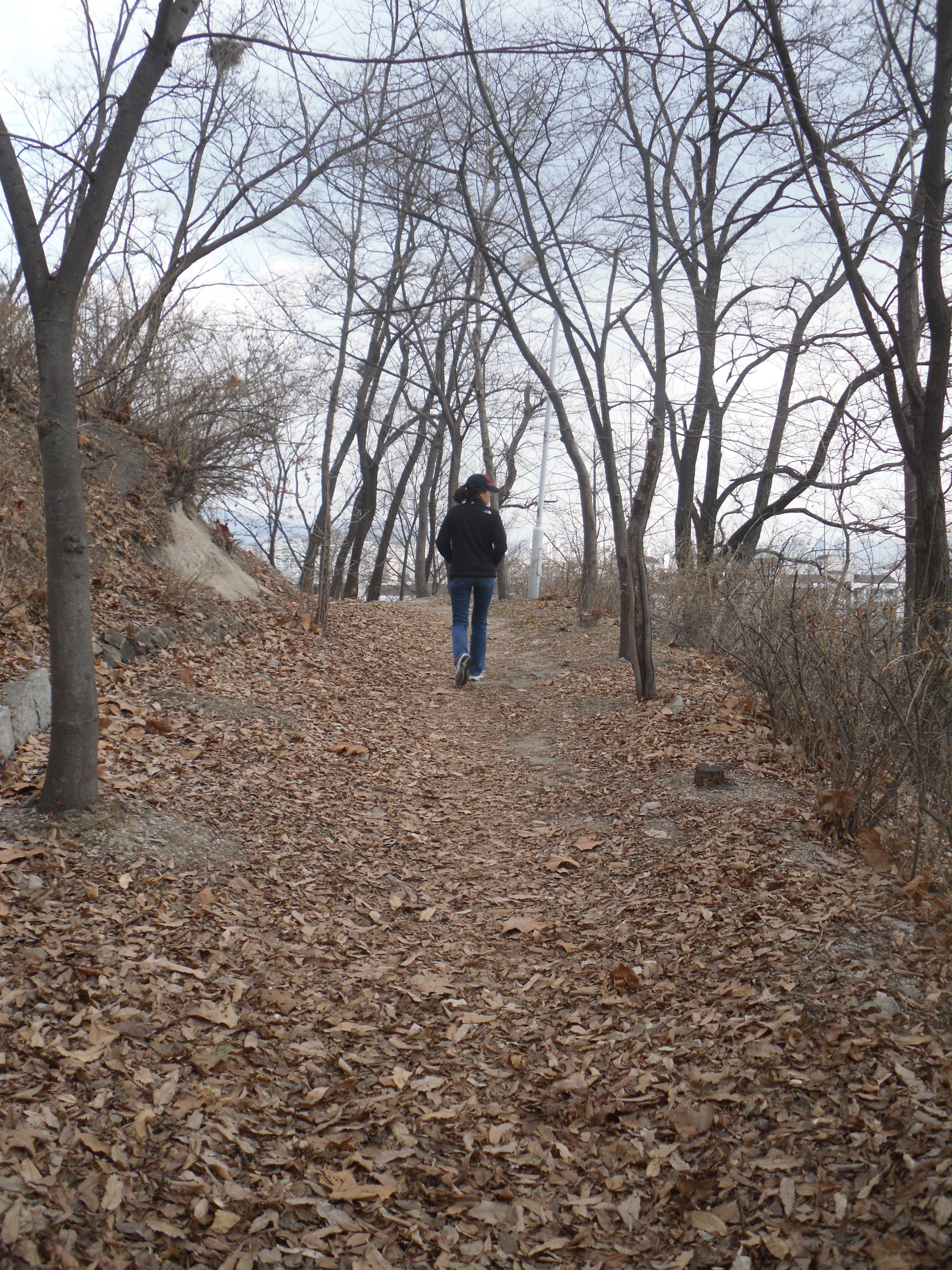
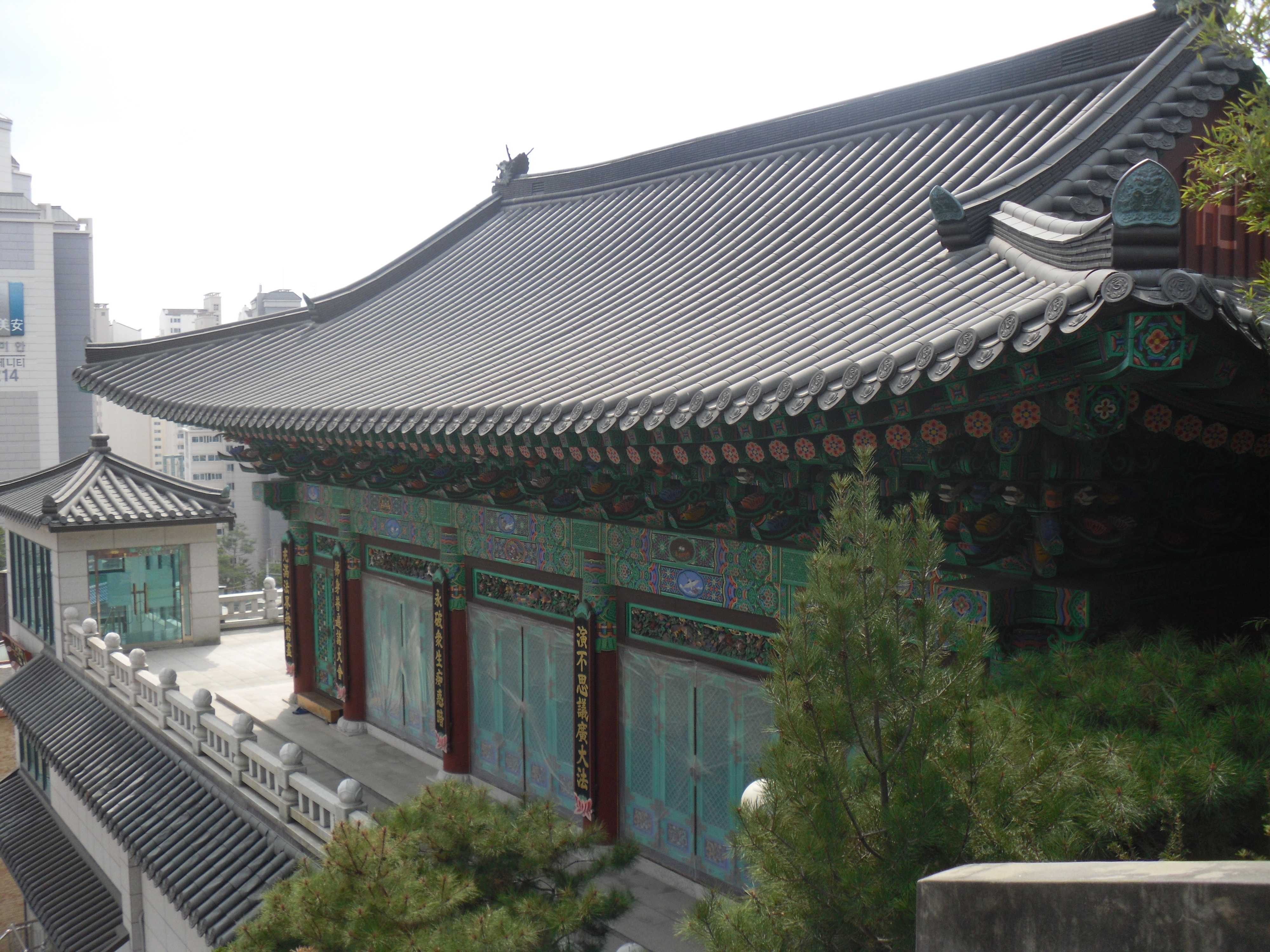
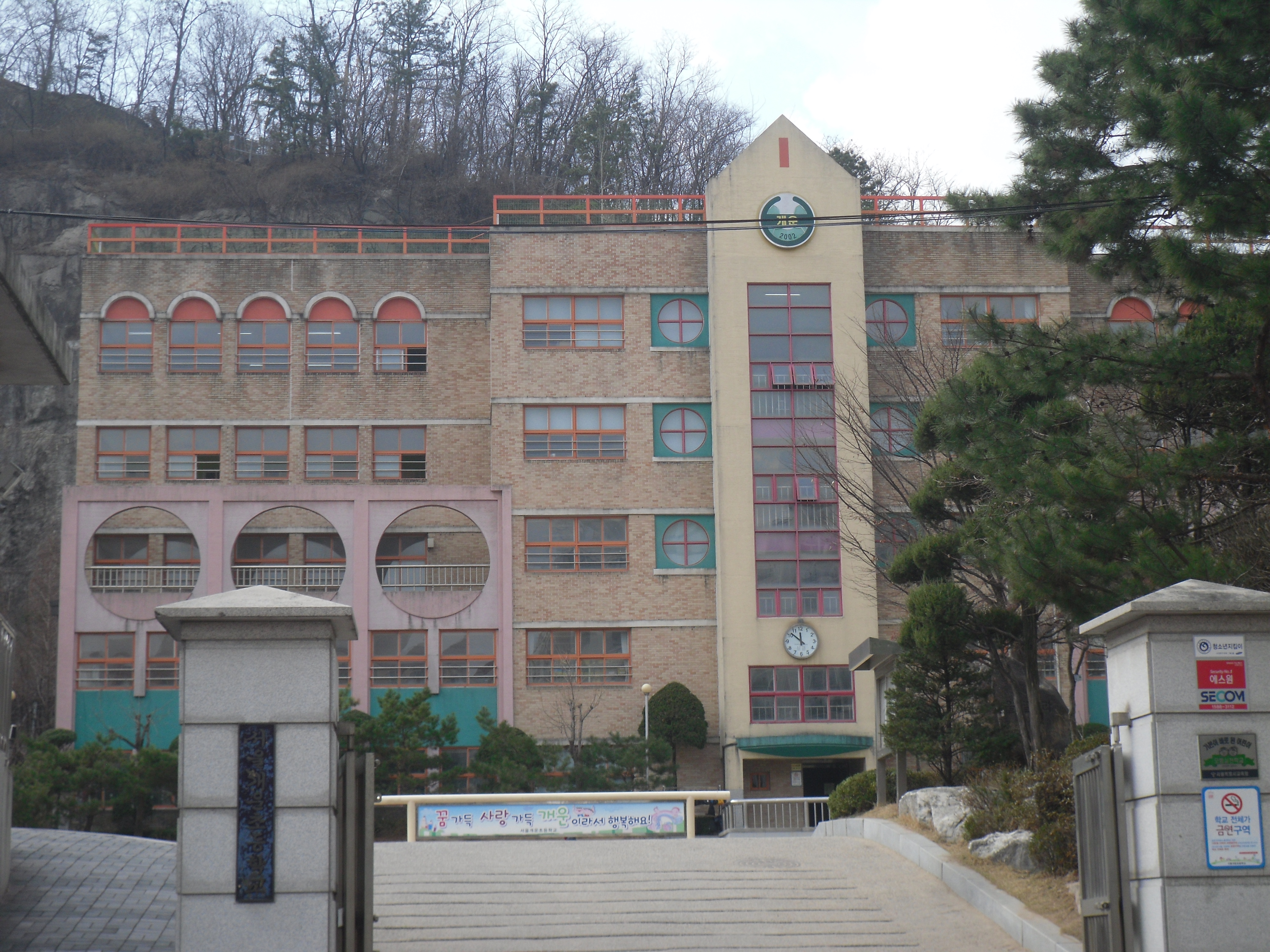
Regarding that “phytoncide” sign…
You can read about phytoncides here.
Basically, they’re chemicals, emitted by certain plants (hence “phyto”), that have anti-aging, anti-rotting effects. In other words, they preserve and/or restore health and vigor, or at the very least, they stave off decay.
NB: phytoncides shouldn’t be confused with phytocides. The latter are plant-killing chemicals, like weed killer.
The large green title text at the upper-right corner of the sign says, “Gae-un Mountain Circle Trail; This is a Sallim-yok (산림욕) Area.” So what the heck is “sallim-yok”? It’s from three Chinese characters:
산 (san, 山): mountain
림 (lim/rim, 林): woods, forest
욕 (yok, 浴): bath, bathing, cleansing
Phonetic rule: when a final “N” meets an initial “L/R,” the result is a double-L. So:
N + L/R = LL
san + rim = sallim
Sallim-yok: a “mountain-forest cleansing” of sorts.
The right-hand column of the sign is presented as a sort of Q&A format. The questions are encircled in these little blobby, cartoonish-looking bubbles, and the answers are in paragraph form below them.
First question: “What is Sallim-yok?”
The answer explains what I mentioned above, about phytoncides and their healing properties. Breathe deeply the forest air, feel the forest at work on your skin, blah, blah.
Second question: “Sallim-yok [is] like this…”
This isn’t a question, per se, but an opening that leads to an explanation of how to get the most benefits out of a mountain-forest cleansing. Best time of year: summer to fall. Best time of day: 10AM to 2PM. The second bullet point in this section says that the most benefits come not from just sitting around in the forest but from working up a sweat. How Korean. No time for just sitting and appreciating nature! Gotta DO something!
Third question: “Efficacy of Sallim-yok”
Again, not really a question. This is more an explanation of some of the benefits of being cleansed by Mother Nature and her phytoncides. First, it combats stress and insomnia. Second, it helps out with both diet and dementia (!). Lastly, it makes your skin healthier (combats dermatitis).
So—mystery solved! And no children were needlessly violated by trees. (Of course, the children who needed to be violated were, indeed, violated.)
I should note, too, that while phytoncides do exist, it’s not clear that there are any good, solid scientific studies saying that walking vigorously in the woods actually produces any health benefits that go above and beyond the benefits of simple exercise. Are the trees exuding enough phytoncides to make a measurable difference in people’s health? Since these benefits seem related to long-term effects like aging, sickness, and maybe even life expectancy, a research project would have to be of pretty massive (and long-lasting) scale. So I’d submit that any current claims about health benefits related to phytoncides are wishful thinking at best and pseudoscience at worst.
Fascinating stuff, Kevin. Thanks for the translation. I hadn’t really heard of phytoncides before. Yeah, I too question the “science”. But still, I’ve always enjoyed pine scented mountain air so I suppose there’s some psychological benefit from that at least….
Without a doubt. Enjoy your nature-bath.